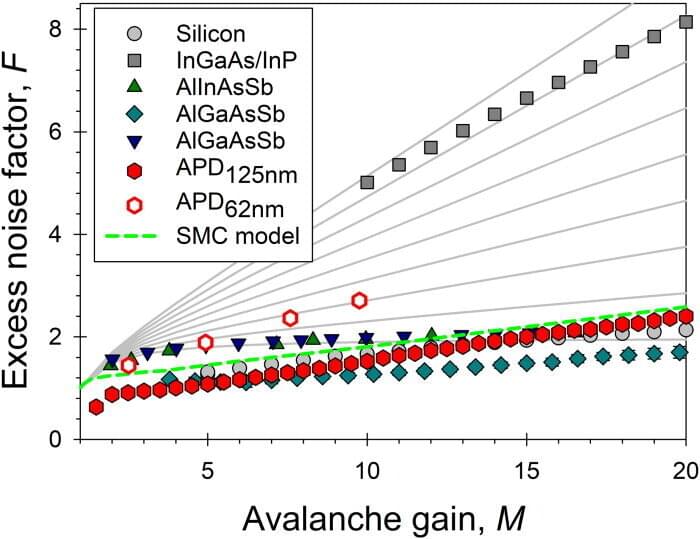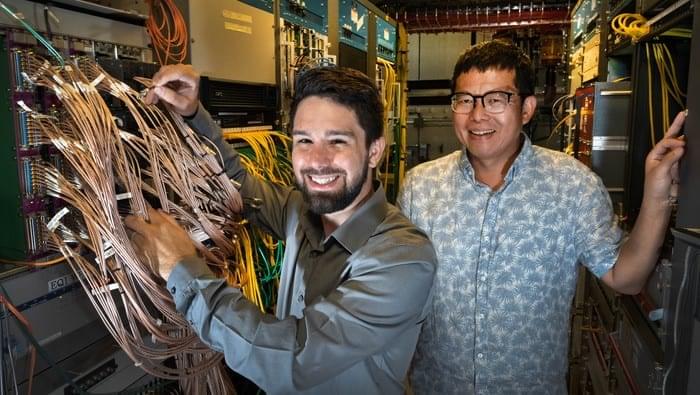Optical pulses, which appear as a flash of light, are used to transmit information in high speed optical fibers, and are increasingly used in Light Detection And Ranging (LIDAR) for 3-dimensional imaging. Both of these applications demand light sensors or photodiodes that are capable of detecting very low levels of light intensity down to a few photons, where a single photon is the quantized energy unit of light.
A newly published paper, “Extremely low excess noise avalanche photodiode with GaAsSb absorption region and AlGaAsSb avalanche region,” in Applied Physics Letters, details a discovery by a Sheffield research team that has the capability to transform a single electron at its input to a cascade of electrons at its output.
This multiplication process is commonly known as avalanche breakdown, while a photodiode incorporating this process is called avalanche photodiode (APD). Though the application of reverse voltage, avalanche photodiodes (often referred to as APDs) have internal gain, which means that when compared to PIN-photodiodes they typically have a higher signal-to–noise ratio.







